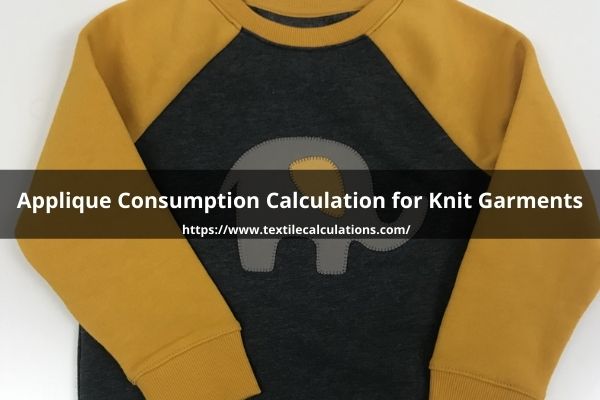Introduction:
Applique is a decorative technique that involves attaching a piece of fabric onto a garment or textile product to create a design or pattern. The importance of applique consumption for garments lies in its impact on the overall garment cost, quality, and design of the product. Applique consumption calculation for knit garments are discussed below:
Definition of Appliqué:
Appliqué could define as laying pieces of fabric on top of the background fabric to form a picture or, pattern. Intricate appliqués may have numerous colors as well as use many layers of fabrics. After each individual piece of fabric is cut out. And the raw edges are turned under and hand-sewn to the background fabric using an invisible stitch. The invention of new materials (glue sticks, water dissolvable stabilizer, and fusible web), the development of new techniques, and acceptance of new standards have made appliqué faster and easier to do and are responsible for its continued popularity.
Appliqué is a decorative surface design technique. That adds texture and dimension to the background fabric as well as apparel. The term comes from the French word applique (In Latin applicare) which means to join or attach.
Consumption Calculation of Applique for Knit Garments

How to calculate applique garments:
Calculating applique consumption for garments involves determining the amount of fabric needed for the applique design.
Here I will discuss how to calculate applique consumption for knit garments.
Suppose,
Applique length = 25 cm
Applique width = 15 cm
Fabric Gsm = 160
Wastage = 25%
Calculation Formula:
Length × Width × GSM × 12 / 10000000 + Wastage%
= 25 × 15 × 160 × 12 / 10000000 + 25%
= 0.09 kg per dozen (consumption of the applique)
If this article will become helpful then please comment below.
